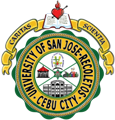Representatives of various colleges and universities in three Visayan regions were oriented on the systems for the disbursement and monitoring of the Tertiary Education Subsidy (TES) for the current academic year.
Over three hundred scholarship coordinators and administrators of Higher Education Institutions (HEI) from regions VI, VII, and VIII attended the said activity on March 16. It was spearheaded by the Private Educational Assistance Committee(PEAC).
TES is a program under the Commission on Higher Education (CHED) which grants financial subsidy to poor but deserving college students. It was enacted in 2017 through Republic Act (RA) 10931 also known as the Universal Access to Quality Tertiary Education Act (UAQTEA).
Student grantees enrolled in State Universities and Colleges (SUCs) and Local Universities and Colleges (LUCs) will be given P40,000 per academic year. Meanwhile, those in private universities and colleges will be given P60,000 annually. The subsidy can be used for books, boarding fees, and other educational- related expenses.
During the forum, the Unified Financial Assistance System for Tertiary Education (UNIFAST) Secretariat clarified that the TES financial aid is only for the first and second semester of the academic year. Summer class and Third trimester is not included.
According to Violeta Galo, Technical Assistant for Administration and Finance of the UniFAST Secretariat, there is no limit as to how many children of a household could be granted with the subsidy; as long as they qualify.
In order to qualify for the TES grant, one must be an enrolled college student and he or she must be part of a roster of names called ““Listahan”. The list was gathered by the Department of Social Welfare and Development (DSWD) through their research which contains information of families that was identified as poor in the country.
In USJ-R, there are 248 student who qualified for TES. This makes the university among the top five schools in Cebu with the most number of grantees.
The students do not need to apply for the program by themselves. The data from the Registrar are chanelled to the CHED portal through the scholarship center of a school. Then, the names of the students are screened if their names are included in the DSWD list.
In the whole country, around 300,000 students benefit from the said effort of the government to provide assistance for collegiate education.
Written by Ireneo Dec Reyes (LIACOM intern)

